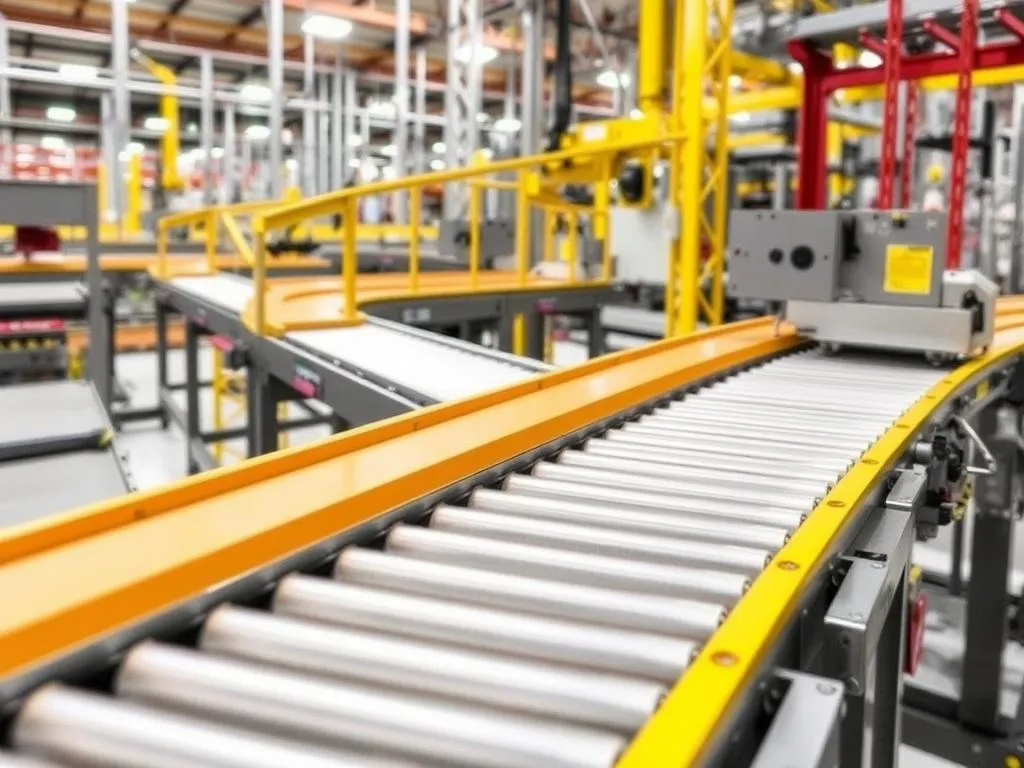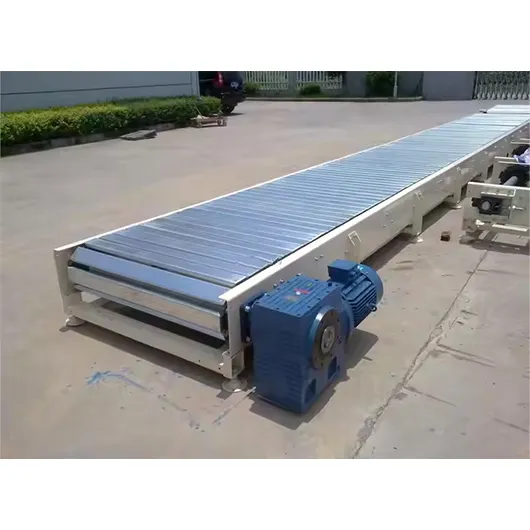Avoid your inquiry is delay response, please enter your WhatsApp/Skype along with the message, so we can contact you at the very first time.
We will reply you within 24 hours. If for urgent case, please add WhatsApp/WeChat: ,. Or call directly.
Packaging is the final handshake your product has with the world. Imagine if every handshake was fast, strong, and always on time! That’s the magic of an automated conveyor system. But for many factories, packaging lines are a bottleneck. The problem? Old manual lines are slow, need many workers, and can’t be quickly changed for new products.
Factories everywhere, from food to e-commerce, face growing pressure to ship more, reduce errors, and keep costs low. With rising demand and labor shortages, how can manufacturers keep up?
If these challenges aren’t fixed, delays, damaged goods, or high labor costs can harm your business and reputation. Competing with bigger, smarter plants becomes almost impossible.
But there’s hope: intelligent automation for packaging—reliable, efficient, and fit for any production need. Modern conveyor systems make it all possible—modular, smart, and tailored to your line. With flexible setup and global reach, Qingdao Stars Creativity Technology Co., Ltd. leads the way in making packaging faster, more reliable, and future-proof.
Automated conveyor systems move, sort, and pack products with little or no human help. Instead of workers lifting, pushing, or sorting, machines do the heavy work.
Here’s how it works, simply:
Modular machines fit any need—add more as you grow or swap parts when your product changes!

Factories are not all alike, so packaging conveyor systems must be flexible and modular. Common types include:
| Type | Best For | Example |
|---|---|---|
| Belt | Food, pharma, e-commerce | Hygienic food lines for packaged snacks |
| Roller | Warehouses, sorting | Fast parcel sorting for e-commerce |
| Modular | Automotive, electronics | Assembly of control panels |
| Overhead/Pneumatic | Pharma, cold chain | Safe drug handling without contamination |
| Hybrid with AGVs/AMRs | Smart factories | Flexible routing with robots and conveyors |
Many lines today use hybrid systems that combine conveyor belts with automated guided vehicles (AGVs) for even more speed and flexibility.
Automated conveyor systems help many industries work smarter:
Fact: 85% of warehouses now use automated conveyors for picking and packing, showing these systems are becoming the norm in top industries (MHI, 2023).
Why switch? Here are big benefits, backed by real data:
Table: Measurable Impacts by Sector
| Industry | What Improved? | Result |
|---|---|---|
| E-commerce | Order speed | 20% faster, 1000+ items/hour |
| Automotive | Assembly cycle | 15% quicker production |
| Pharma | Packing error rate | 0.1% (almost zero errors) |
| Food/Bev | Product damage | 50% less breakage |
The market for automated conveyor systems is growing fast—valued at $9.8B , expected to hit $15.3B by 2030 (Allied Market Research,). Most factories see payback in just 2-3 years, thanks to labor savings, better accuracy, and quicker shipping.
Table: Market & ROI Data
| Stat | Number/Fact |
|---|---|
| Global Market | $9.8 billion |
| Projected (2030) | $15.3 billion |
| Payback period | 2-3 years |
| Energy savings (new tech) | 30% |
| Labor cost cut | 25-40% |
If you’re searching for trusted partners, these are the brands factories choose worldwide:
| Brand | Why Choose Them? |
|---|---|
| Siemens | Advanced smart controls, scalable design |
| Honeywell | E-commerce order fulfillment, smart software |
| Dematic | Modular lines, big facility automation |
| Swisslog | Pharma and food, global support |
| Hytrol | Customizable, affordable solutions |
For a more custom, adaptable, and globally supported solution, Stars Creativity stands out for plants needing tailored lines for unique products, not just off-the-shelf models. Our CE-certified machines ensure quality and safety anywhere.
The right solution depends on:
Checklist for your next system:
Cost Tip: Retrofitting old lines with modular units is cheaper than buying all new equipment—a strategy used by leading plants for quick upgrades and faster payback.

Before you start:
For a smooth install:
After setup:
Smart factories are here. Tomorrow’s lines will be:
Customers and brands worldwide want more sustainable packaging. New systems now use up to 30% less energy, with lighter, recyclable belts and smart drives.
| Company | Solution | Results |
|---|---|---|
| Walmart | RFID-integrated conveyors | 60% fewer shipping errors |
| FedEx | Honeywell predictive maintenance | 40% less downtime |
| Tesla | Siemens modular pallet conveyors | 30% faster battery production |
| DHL | Pneumatic system for pharma | 25% energy savings |
| Item | Average Cost | Key Benefit |
|---|---|---|
| Basic conveyor system | $50,000–$150,000 | Labor savings, output increase |
| Retrofit upgrade | $20,000–$80,000 | Longer equipment life |
| IoT upgrades for monitoring | $5,000–$15,000/system | Cuts downtime, saves on maintenance |
What industries use automated conveyors most?
Manufacturing, warehousing, pharma, food, e-commerce—anywhere fast, accurate packaging is needed.
How much does a system cost?
From $50,000 for a small setup to $150,000+ for large lines; payoff usually comes in 2-3 years.
Can my old machines be upgraded?
Yes! Modular add-ons and IoT upgrades fit most legacy equipment for quick, low-cost automation.
Is automation energy efficient?
Modern lines use up to 30% less energy—good for your wallet and the planet.
Factories everywhere are under pressure to do more, faster, and with fewer people. Automated conveyor systems deliver the speed, flexibility, and reliability every manufacturer needs. With the right partner, even smaller plants can reach “big brand” performance.
From flexible, CE-certified machines to custom, full-line solutions, Stars Creativity offers the tools and global support you need to move your packaging into the future—with smart, simple automation.
Make your job easier. Let automation handle the heavy lifting, and focus your people where they matter most.
This guide used real industry data and case studies to show you what works in conveyor automation. If you’re ready to make packaging smarter, now’s the time.